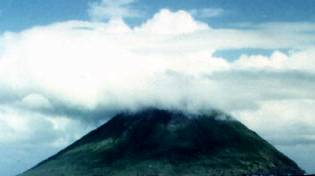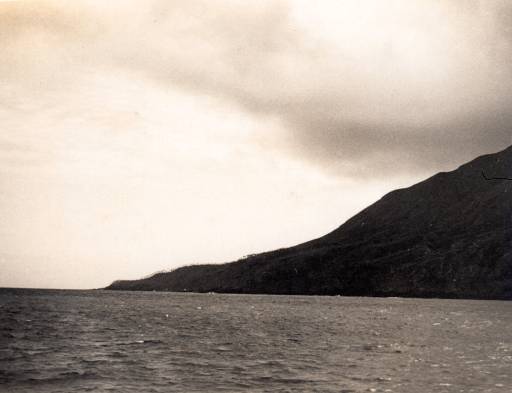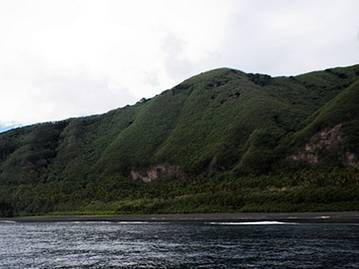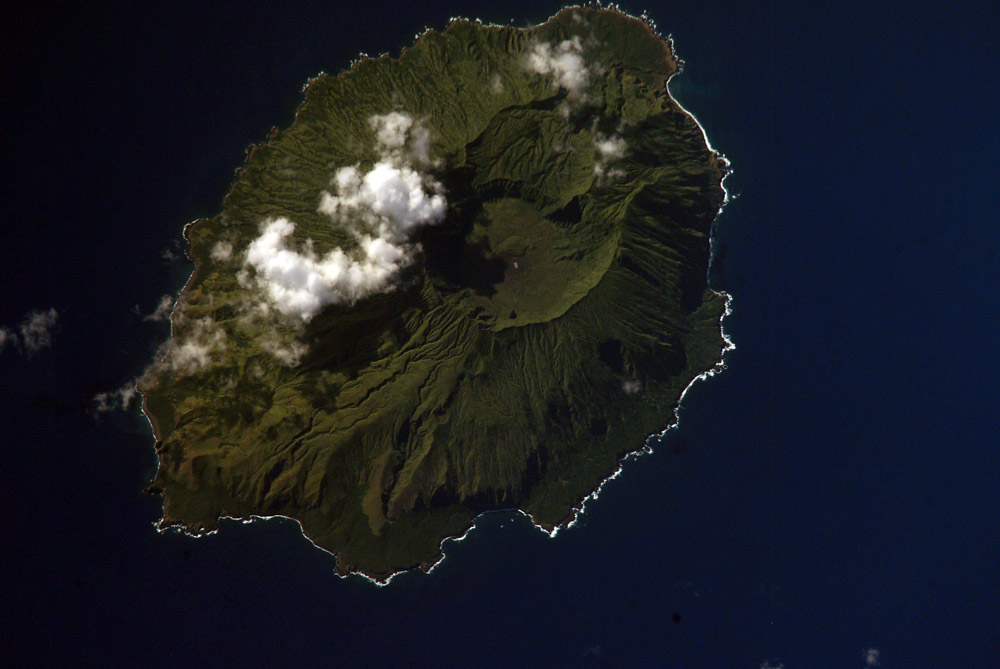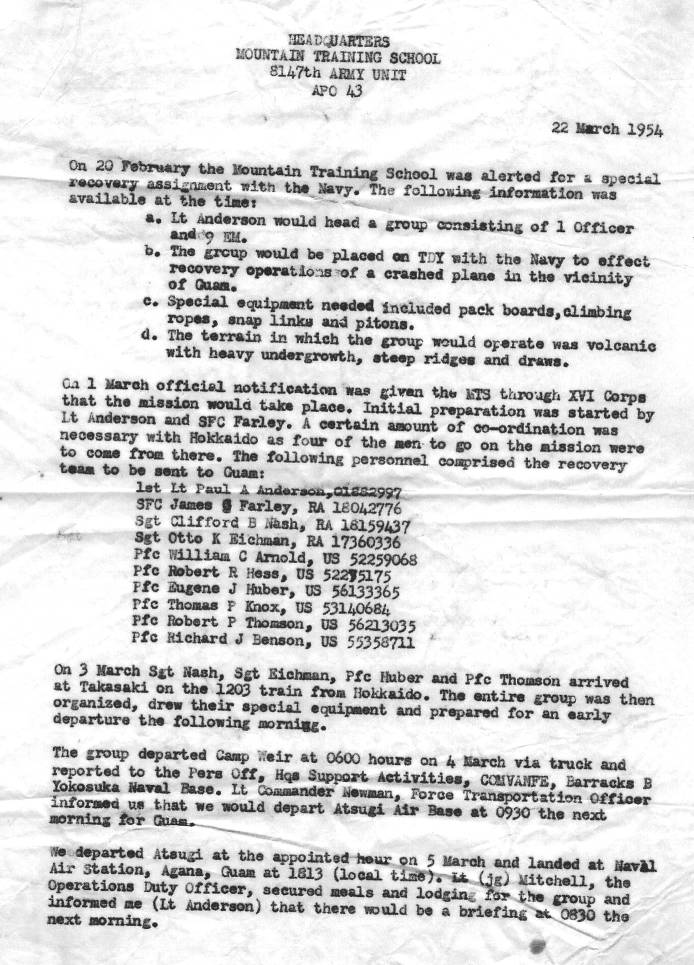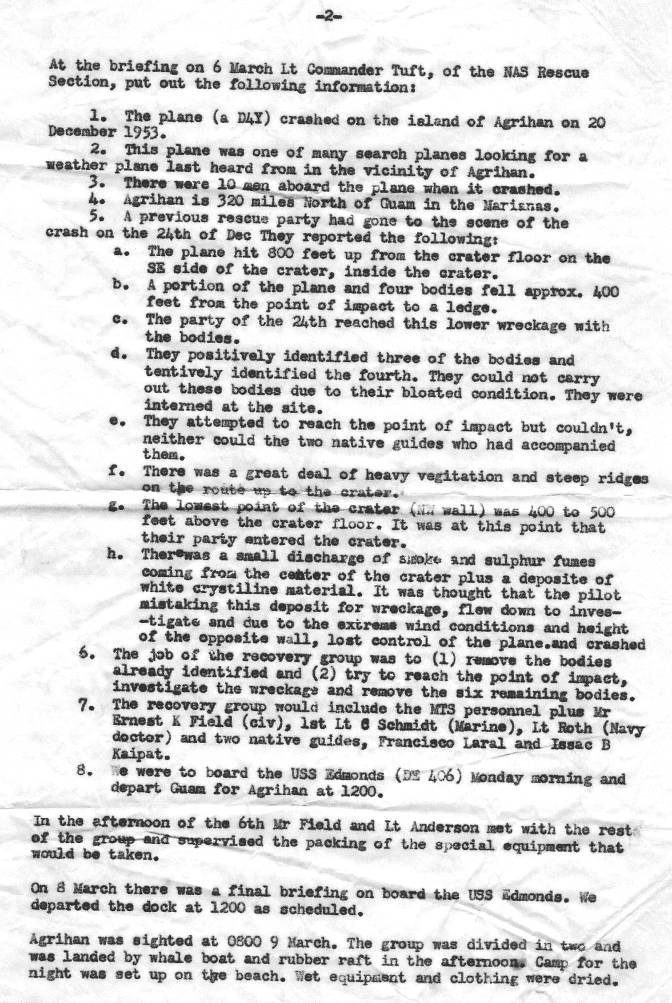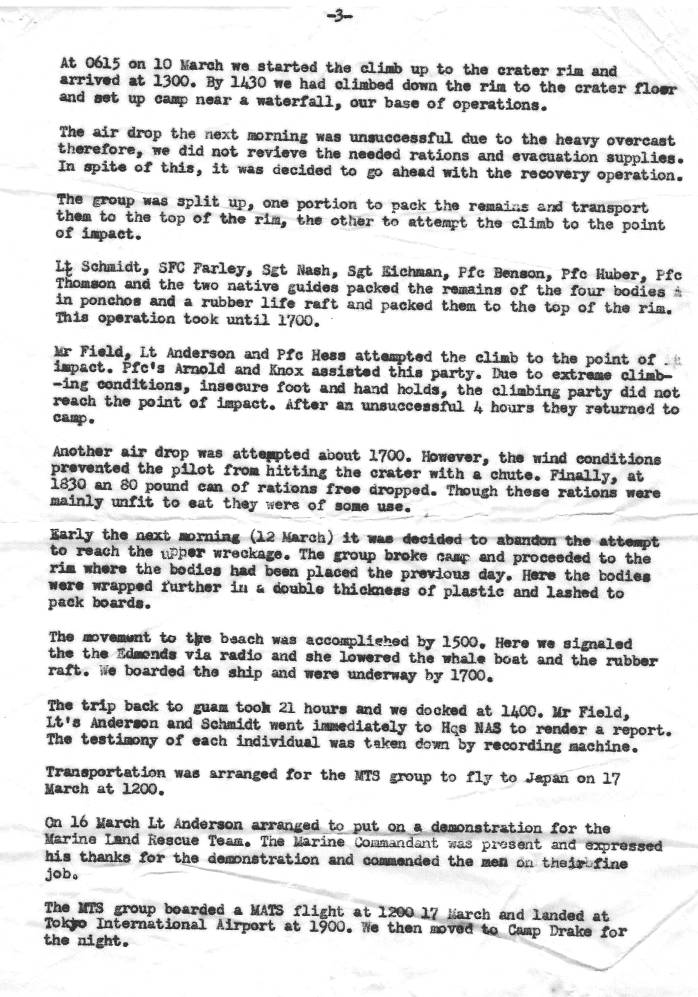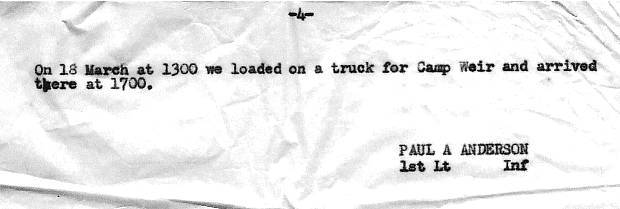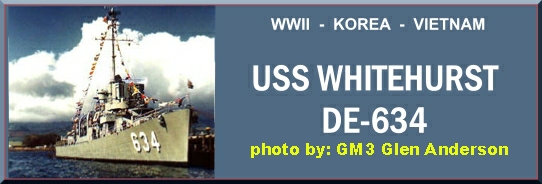
USS Whitehurst Logo by: Pat Stephens, Webmaster, DESA
|
US Army Recovers the Remains of
the Navy Airmen |
|
Mr. Crow,
Here is what I re-discovered while reviewing my "interview" with my
dad
( this occurred while he was sick with lung cancer, from which he died approx. 4 months later, eleven years ago): My dad, Pfc Thomas P. Knox was 22 years old when he, along with 9 other members of the 8147th AU, Mountain Training School were assigned TDY to the Navy in order to investigate & recover the bodies of the naval aircraft crash into the crater on Agrihan. This occurred on March 9, 1954. I have attached the official report of this mission ( along with a photo of Agrihan taken from the USS Edmonds) so I will not recount it here, but will insert observations my father made, which were not in the report. My dad was the 1st man in this party to rappel into the crater, and he said that he did as he normally would & descended on a 60 foot line ("don't call it a rope", he informed me!). The hot air rising out of the volcano, along with the wind coming off of the Pacific, managed to "grab me, and lift me straight out, horizontal across the mouth of the crater, for a full sixty feet distance of the line." While this was frightening, my dad stated that "...the wind ended just like it began, and he was gently lowered back to the face of the crater." After this experience though, he rappelled the rest of the way down on ten to twelve foot lines! My dad described the crash site exactly as it has been described in other posts to this site; the majority of the wreckage was resting on a small ledge part of the way down the facing wall. My dad said that it was "terribly warm" inside of this "somewhat active volcano", and that the Navy attempted some airdrops of food and water supplies, but they would descend on the parachute into the crater, and then, because of the heated air, rise back up and drift out to sea. Eventually, they attempted a drop without a chute, but most of the food was destroyed by the impact with the ground. My dad stated that they recovered six bodies and transported them out of the crater and returned the deceased to the Navy. He was reluctant to describe the condition of the deceased, but he noted that all of the bodies were missing their shoes - speaking to the great impact with the crater wall. You can read the results of this mission in the attached report. My dad received letters of commendation from several officers, in both the Army and Navy, for his part in this expedition. He only recounted this to me at my prodding. I believe that he, along with all of the men that have posted to your site about this, and other adventures in the military, looked at it as if was not that great of a deal - that they were just doing the jobs that needed to be done. However, I know that this is not actually the case, all of the men that are mentioned here, as well as all of the men who have served our country, have shown incredible honor and fortitude, and I am extremely proud of, and grateful to all of you. If anyone that reads this, or knows of anyone who served on the USS Edmonds in 1954, (the ship that transported my dad and his unit to Agrihan for this mission) would like to contact me, I would be extremely grateful. I look forward to any further information that may be out there!
Sincerely,
Thomas A. Knox
Hayden, Alabama
Aug. 2, 2013
The following are official documents describing
the mission to recover the
|
WWII
Era | Korea War &
'50s | Viet Nam & 60s |
Reunions |
All Links Page |
Search & Rescue
Memorial |
Poetry |
Enemy Below |
Taps List |
Photos/Armament |
History |
Crews Index |
Home
